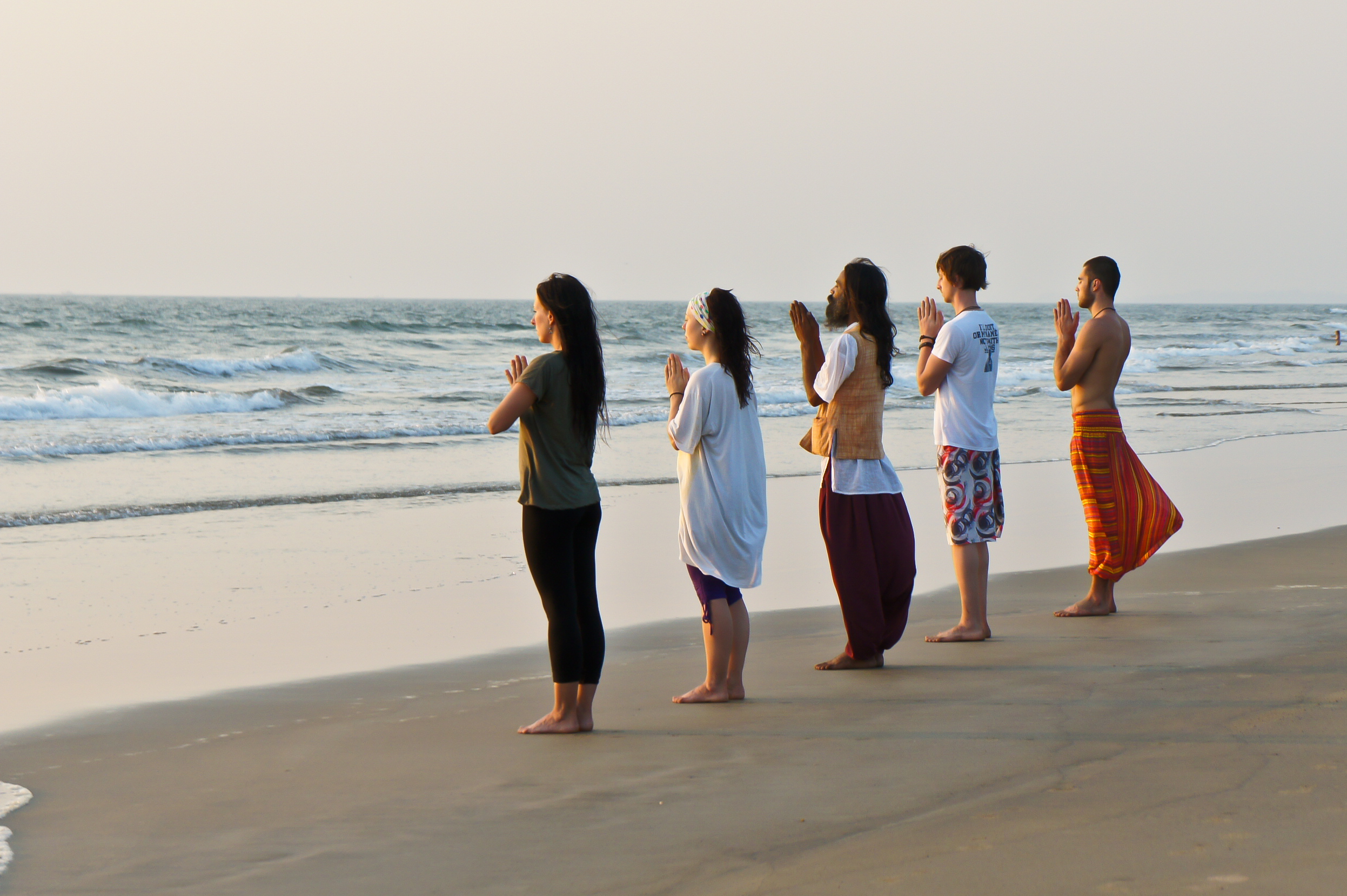As we journey through the trials, tribulations, victories, defeats, loves, and losses of our lives, we we continually cycle through 3 basic archetypes that correspond to the characters of all the great myths and legends of human history: These archetypes are the Hero, the Victim, and the Healer. These 3 archetypes correspond to the 3 gunas or fundamental qualities of manifestation, as described in Sankhya Darshana- Rajas, Tamas, and Sattva. The Hero archetype is synonymous with the Rajas guna, Pingala nadi, the Sympathetic (fight or flight) nervous system, the Sun, the masculine. When the Rajas guna is stable, the hero is able to use her energy, skills, and power to make great change for the better of all. When there is too much of the Rajas guna present, the hero becomes destructive, violent, egotistical, cruel, overbearing, domineering, or develops a savior complex.
The Victim archetype corresponds to the Tamas Guna, Ida nadi, the parasympathetic nervous system, the moon, the feminine. When the Tamas guna is present in its correct amount, we are fully receptive and aware of how our thoughts, actions, intentions, and beliefs are affecting others and how others’ thoughts, actions, intentions, and beliefs are affecting us. However when there is too much of Tamas guna present, the victim blames the external circumstances of life for her own internal state, constantly seeks scapegoats on which to place blame for her internal state, thus giving her power away by perceiving that everything is happening “to” him rather than just happening. Too much time spent in this state leads the hero to become bitter, self-defeating, and cynical.
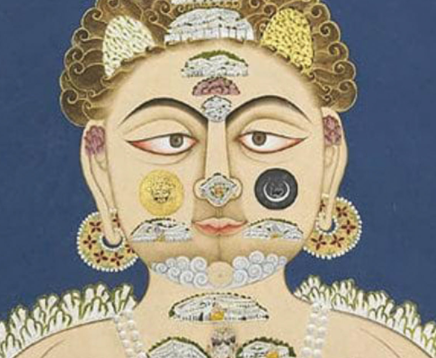
The healer archetype is synonymous with Sattva Guna, the Sushumna nadi (the central channel, a perfect balance of Ida/Pingala, Sun/Moon, Masculine/Feminine, Parasympathetic/Sympathetic nervous systems, etc.). The healer, embodying this archetype, is fully aware of his internal processes, his own evolution, and is concerned with spreading love, healing, assisting themselves and others to evolve and taking full responsibility for their own power, healing, and emotional state.
The cycle through these 3 archetypes follows a similar trajectory in all the great myths and constantly throughout our lives. First we become inspired by some great ideal or cause, we want to be a vessel for change, we really want to help, so we charge into the world headstrong, taking action and making change. In this process, we necessarily placing great importance on the external world and generally face great resistance in doing so. Eventually, we use up all our energy on this great cause of action, burn out, retreat, recharge, process, and enter into victim archetype- during this process, we realize how much importance we placed on our cause to save the world, and we also see how much suffering we have inflicted upon ourselves and others, simply by our actions carried out in Rajas mode. Usually, as we recover and reflect in Tamas mode, we are able to discover the Healer/Sattva archetype by recognizing both the cause and the remedy for all the suffering we have caused to ourselves and others while constantly vacillating between hero and victim. Eventually, we heal and recover, and then something else happens that stimulates us to action, and we repeat the process.
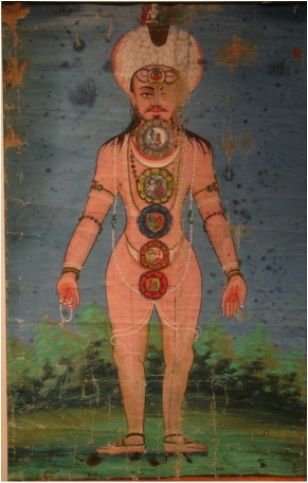
However, gradually, the more time we spend under the influence of Sattva Guna, cultivating our Sattvic state, our Healer mode, the less time we spend vacillating between the extremes of hero and victim. Our internal pendulum no longer swings so deeply into the extremes of this duality and the suffering begins to alleviate. While swinging back and forth between healer and victim, there is still a sense of duality and disconnection (the hero necessarily perceives an ‘antagonist’ that must be conquered; the victim feels powerless against some external force), whereas the healer is deeply aware of the total interconnectedness and unity of all things and all beings. Fear is the enemy which disconnects, separates, and fragments our awareness into that duality and away from the unity consciousness of the Healer. Love is that which connects.
So, of course, the hero/victim duality is required for living. There will always be external battles for us to fight. The heroine puts herself in danger and exposes herself to ridicule and anger of the world, often sacrificing herself for the greater good. Playing the hero all the time is completely unsustainable- examples in myth and legend abound- to wit, the “great doubt” we see in every hero who ever walked the earth is a result of this. In the Ramayana, at the scene of the last great battle, after Rama had defeated the hordes of grotesque asuras, or demons, and was about to face off with the demon king Ravana, he finds himself injured, exhausted, ready to give up, cursing his fate, on the verge of defeat. The opening scene of the Iliad finds Achilles in the same mode- 10 years into the war, burned out, refusing to fight any longer, disillusioned, hiding away in full on victim mode, with a “the world screwed me, so screw the world” mentality, although he is the greatest warrior in Greece and his army desperately needs him. Same story with Arjuna on the edge of his great battle in the Bhagavad Gita. Bruce Willis’s character at the beginning of Die Hard- cynical, weary, recuperating, blaming the world for all his troubles. In all of these scenarios, at the darkest moment of doubt, a mentor comes along- for Rama, it is the sage Agastya who appears on the scene just in the nick of time, teaches him the Aditya Hridayam-The Heart of the Sun- the most powerful mantra that exists, which immediately restores his Rajas guna, solar/masculine/Ida/
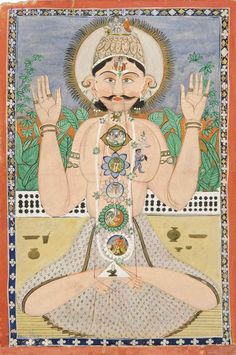
In my understanding, the practice of Yoga, with a firm understanding of Sankhya philosophy and the three Gunas, is the original metaphor for the journey through these archetypes, and a way to gain greater control over, or at least better understanding of, this eternal fluctuation so that we can see how it affects our psyches. Specifically, in the 5 pranayamas Krishnamacharya passed to BNS Iyengar from the Himalayan sages, Ida = Tamas = left nostril = sympathetic nervous system = moon; Pingala = Rajas = right nostril = parasympathetic nervous system = sun; Shusumna = central channel = perfect sympathetic/parasympathetic balance; perfect sun/moon balance. The practice of pranayama is a very potent metaphor for this fluctuation. Puraka (inhalation ) Rechaka (exhalation) and Kumbakha (retention) correspond to these three states. The 5 specific are pranayamas accompanied with visualisations and mudras for balancing and working within these modes- by working with one channel or the other, depending on which archetype we are inhabiting, we can stimulate the opposite channel, returning to balance, inducing longer periods of kumbhaka in which we inhabit and remain within the Sattvic state for longer periods of time.
‘Nature’ is the manifest world subject to the immutable laws of Rajas/Tamas/Sattva fluctuation. For the universe to even exist, polarity must occur – Duality must be at play in order for any kind of manifestation, and for us to exist in physical form at all, we must agree to play this game of fluctuation. However, through certain specific practices of Yoga and pranayama, we are able to bring greater conscious control over the interplay of Rajas/Tamas within our own consciousness, spending more time under the Sattvic archetype, and learning how to greater witness the nature of that interplay within our own psyches and eventually master it rather than being dragged back and forth by the eternal tug-of-war.
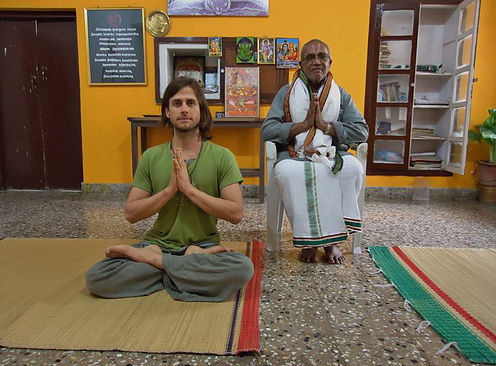
Joey Paz (RYT-500), who will be teaching our Yoga retreat March 3-11, 2019, is a longtime practitioner and devotee of the 8 limbs of Ashtanga Vinyasa Yoga in the lineage of Sri BNS Iyengar. Click here to read his complete bio.
